Tooth-Colored Fillings – Clute, TX
A Natural-Looking Way to Repair Decayed Teeth
Cavities are the result of bacteria attacking the enamel protecting the vulnerable inner parts of your teeth. The longer you ignore tooth decay, the larger cavities will grow. Eventually, the entire tooth will be compromised, and you might need a root canal or a tooth extraction to protect the rest of your smile.
We can remove the decayed material from your tooth to stop the problem from spreading any further. Then, in order to repair the damage already done, we can place a simple restoration known as a dental filling, which replaces the missing part of the tooth. However, some patients are reluctant to get fillings because they’re only familiar with those made out of a dark-colored metal amalgam.
For this reason, our team at Woodshore Family Dentistry only uses beautiful tooth-colored fillings in Clute that can be designed to blend in with your one-of-a-kind smile. Before you call to schedule an appointment, read below to learn more about this aesthetically pleasing way to repair your grin.
Why Choose Woodshore Family Dentistry for Tooth-Colored Fillings?
-
Porcelain and Composite Dental Fillings Available
-
Long-Lasting, Lifelike Dental Restorations
-
Most Dental Insurance PPOs Accepted
Types of Tooth-Colored Fillings
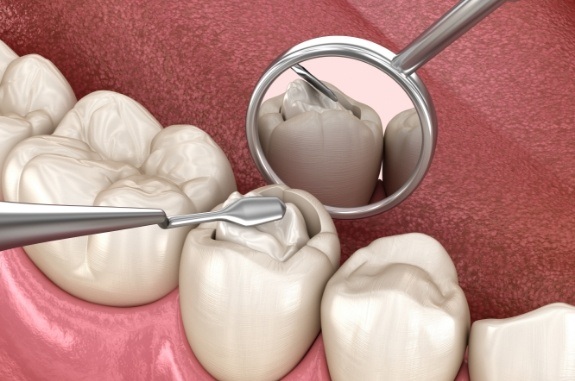
Some of the materials used to create fillings include gold, silver amalgam, glass ionomer, and plastic. But at our dental practice, we favor composite resin and porcelain. These are materials that can make fillings that look like a natural part of your tooth while still being able to stand up to repeated biting and chewing.
Composite Tooth-Colored Fillings
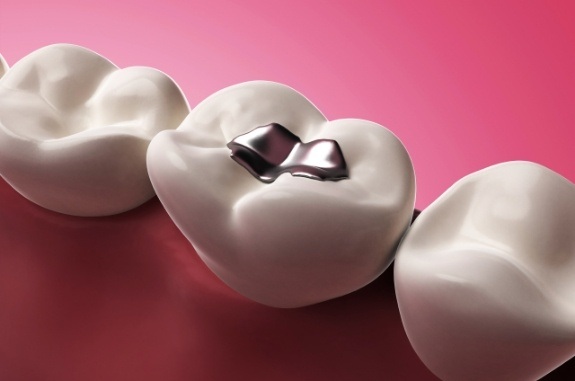
When placing a tooth-colored filling, composite resin tends to be our material of choice. While they may not be as strong as amalgam fillings, they are still extremely durable and can survive many years of use. Also, since the material directly bonds with the tooth, it can provide additional strength and support from within. The average lifespan of composite fillings is around 7 to 10 years. You can ensure that your fillings last as long as possible by brushing and flossing daily, and also eating plenty of smile-friendly foods.
Temporary Fillings
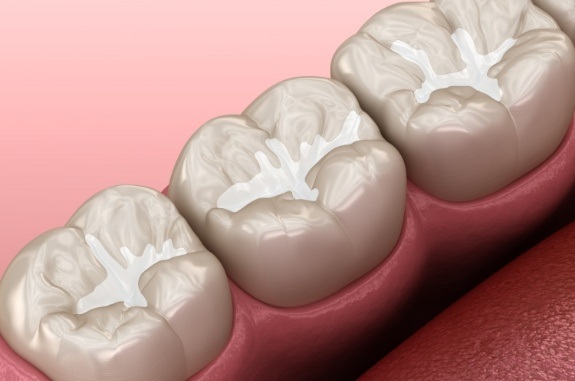
In some cases, a temporary filling may be placed on your tooth for a brief period of time, typically no more than one month. The restoration will eventually fall out or fracture on its own. You might get a temporary filling if:
-
Placing a permanent filling will take more than one visit, and a temporary restoration is needed to protect the tooth in the meantime.
-
You have just completed root canal therapy.
-
The pulp inside of your tooth is irritated and needs time to recover.
-
You have a dental emergency.
Porcelain Tooth-Colored Fillings
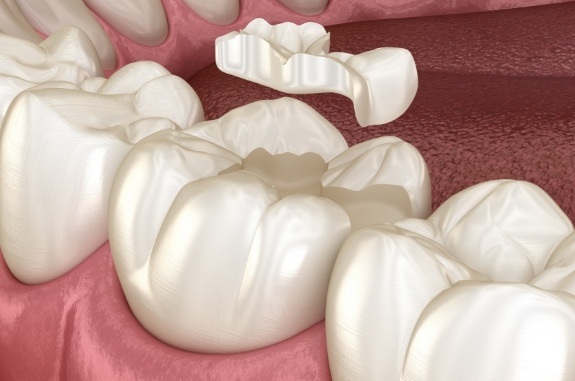
Compared to composite fillings, porcelain fillings are more abrasive, but they’re also less likely to stain. That means there’s less of a chance that your filling will become discolored and yellowed over time. Porcelain fillings also have a longer average lifespan than composite fillings, typically lasting around 15 years.
When considering tooth-colored filling options, you’ll want to remember that porcelain fillings come with many benefits:
-
They are very strong and can be exposed to high amounts of biting pressure without breaking.
-
They do not cause allergic reactions, which makes them a great option for anyone who cannot tolerate traditional amalgam fillings.
-
They resemble natural tooth enamel in many ways. Not only do they have a similar color and texture, but they also have the same light-reflecting properties. This helps porcelain restorations blend in seamlessly with your actual teeth.
-
Porcelain is not a very porous material, which means it doesn’t stain as easily and significantly lowers the risk of discoloration.
The Tooth-Colored Fillings Procedure
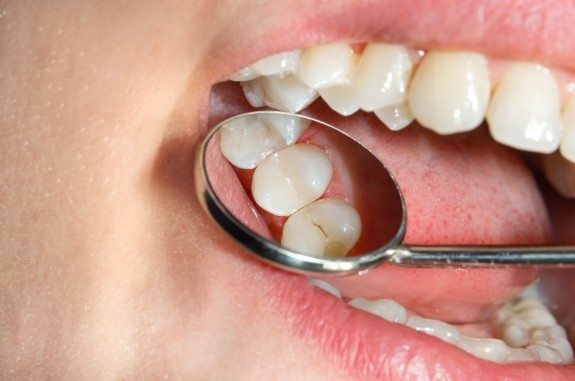
To place a tooth-colored filling, we typically follow these steps:
-
Local anesthesia is administered so that you don’t feel any discomfort during the procedure (although you may feel some pressure).
-
The decayed parts of your tooth are removed. This can be done with an air abrasion instrument or a drill; it depends on what state your tooth is currently in.
-
We’ll examine the tooth carefully to confirm that there is no decay remaining.
-
The inside of the tooth is sterilized, completely removing any remaining bacteria. If the decay has reached the area near the root, a layer of composite resin or glass ionomer may be used to protect the nerves.
-
The tooth-colored filling is then placed in the tooth. One layer is placed at a time. Each layer is hardened by a special light.
-
Once the filling is completely in place, we will polish it and make any necessary final touches before completing the procedure.
Tooth-Colored Fillings FAQs
Which material should I choose for my filling?
My filling has turned black. What does that mean?
Are tooth-colored fillings safer than silver fillings?
How should I take care of a tooth-colored filling?
We recommend reliable tooth-colored materials such as porcelain and composite resin that can be made to match the natural color of your teeth. Furthermore, these materials are durable, resist discoloration, and can be made to look like natural enamel so that the average observer won’t even realize that you’ve had dental work done.
Silver amalgam fillings may turn black at some point. This is because, in the moist environment of your mouth, the amalgam starts to break down and oxidize, causing it to change color.
Both tooth-colored fillings and silver amalgam fillings are considered safe to use. That said, silver fillings do contain small amounts of mercury, which can be released as the restoration corrodes over time. Since tooth-colored fillings don’t corrode, they may be seen as the preferable option.
You should give your tooth-colored filling the same kind of care and attention you give your natural teeth. This means brushing and flossing at least twice a day to keep the area clean and healthy. Also, try to avoid habits that could damage the filling, such as crunching ice or using teeth as tools.







